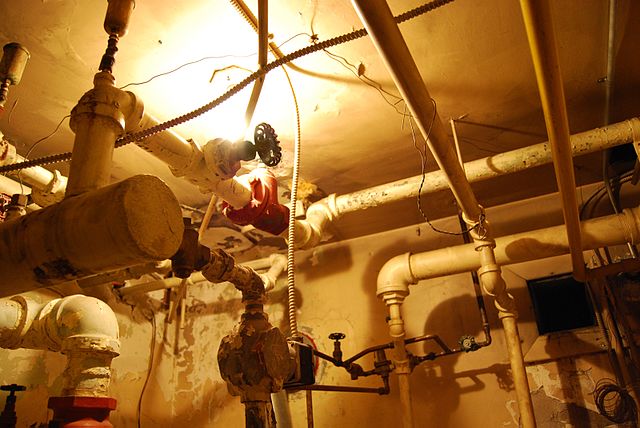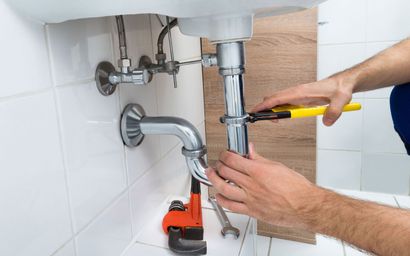The article which follows pertaining to Anatomy of a House: Understanding the Components is absolutely fascinating. Don't skip it.

Recognizing just how your home's pipes system functions is vital for each house owner. From providing clean water for drinking, food preparation, and showering to securely eliminating wastewater, a well-maintained pipes system is critical for your household's health and convenience. In this detailed overview, we'll check out the elaborate network that makes up your home's plumbing and deal pointers on upkeep, upgrades, and managing common concerns.
Intro
Your home's pipes system is more than simply a network of pipelines; it's a complicated system that ensures you have access to tidy water and reliable wastewater removal. Recognizing its components and just how they work together can aid you avoid costly repair services and guarantee every little thing runs smoothly.
Fundamental Components of a Pipes System
Pipes and Tubes
At the heart of your plumbing system are the pipelines and tubing that bring water throughout your home. These can be made of various materials such as copper, PVC, or PEX, each with its advantages in regards to resilience and cost-effectiveness.
Components: Sinks, Toilets, Showers, etc.
Components like sinks, toilets, showers, and tubs are where water is used in your house. Recognizing how these fixtures attach to the plumbing system aids in diagnosing issues and intending upgrades.
Valves and Shut-off Factors
Valves manage the circulation of water in your plumbing system. Shut-off valves are critical during emergency situations or when you need to make repair work, permitting you to isolate parts of the system without interrupting water flow to the whole house.
Water Supply System
Key Water Line
The major water line connects your home to the local water or a private well. It's where water enters your home and is dispersed to numerous fixtures.
Water Meter and Pressure Regulatory Authority
The water meter actions your water usage, while a pressure regulator ensures that water flows at a safe pressure throughout your home's plumbing system, preventing damage to pipelines and components.
Cold Water vs. Warm water Lines
Comprehending the difference in between cold water lines, which provide water directly from the primary, and hot water lines, which bring heated water from the water heater, helps in troubleshooting and preparing for upgrades.
Water drainage System
Drain Pipes Piping and Traps
Drain pipelines bring wastewater away from sinks, showers, and bathrooms to the drain or septic tank. Traps prevent sewer gases from entering your home and additionally trap particles that could create clogs.
Air flow Pipes
Ventilation pipelines permit air right into the drainage system, protecting against suction that might slow water drainage and trigger catches to vacant. Correct air flow is vital for maintaining the honesty of your pipes system.
Significance of Proper Drainage
Making certain appropriate drain prevents back-ups and water damages. On a regular basis cleaning drains pipes and preserving catches can protect against pricey fixings and expand the life of your pipes system.
Water Heater
Types of Water Heaters
Water heaters can be tankless or standard tank-style. Tankless heating systems warmth water as needed, while containers store heated water for immediate use.
Exactly How Water Heaters Link to the Plumbing System
Comprehending exactly how hot water heater link to both the cold water supply and warm water circulation lines helps in identifying concerns like not enough hot water or leaks.
Maintenance Tips for Water Heaters
Consistently flushing your water heater to eliminate debris, examining the temperature level settings, and examining for leaks can prolong its life-span and boost energy efficiency.
Typical Plumbing Problems
Leakages and Their Reasons
Leakages can occur as a result of aging pipes, loosened installations, or high water stress. Addressing leaks promptly stops water damages and mold growth.
Obstructions and Clogs
Clogs in drains pipes and commodes are commonly caused by purging non-flushable items or an accumulation of oil and hair. Making use of drain displays and bearing in mind what goes down your drains pipes can prevent blockages.
Indicators of Plumbing Troubles to Watch For
Low water stress, slow drains pipes, foul odors, or abnormally high water expenses are indicators of potential plumbing troubles that must be dealt with without delay.
Plumbing Upkeep Tips
Routine Assessments and Checks
Schedule yearly plumbing examinations to catch concerns early. Search for indications of leaks, rust, or mineral buildup in taps and showerheads.
DIY Maintenance Tasks
Basic tasks like cleansing tap aerators, checking for commode leaks making use of dye tablet computers, or insulating subjected pipelines in cold environments can prevent major plumbing concerns.
When to Call a Professional Plumbing Professional
Know when a plumbing concern requires expert expertise. Attempting intricate repairs without appropriate expertise can result in even more damages and higher repair work expenses.
Updating Your Pipes System
Factors for Updating
Updating to water-efficient components or changing old pipelines can boost water top quality, reduce water bills, and increase the value of your home.
Modern Plumbing Technologies and Their Benefits
Check out modern technologies like clever leakage detectors, water-saving commodes, and energy-efficient hot water heater that can conserve cash and lower ecological influence.
Price Factors To Consider and ROI
Compute the ahead of time prices versus lasting financial savings when taking into consideration pipes upgrades. Numerous upgrades pay for themselves with lowered energy costs and less repairs.
Environmental Impact and Conservation
Water-Saving Fixtures and Home Appliances
Mounting low-flow taps, showerheads, and bathrooms can substantially lower water use without giving up efficiency.
Tips for Reducing Water Usage
Simple practices like repairing leaks quickly, taking shorter showers, and running full tons of laundry and meals can save water and lower your utility bills.
Eco-Friendly Plumbing Options
Consider sustainable plumbing products like bamboo for floor covering, which is durable and eco-friendly, or recycled glass for kitchen counters.
Emergency situation Readiness
Steps to Take During a Plumbing Emergency
Know where your shut-off valves lie and just how to switch off the water system in case of a ruptured pipe or significant leakage.
Value of Having Emergency Situation Get In Touches With Useful
Keep contact details for regional plumbings or emergency situation solutions readily offered for quick feedback throughout a plumbing situation.
DIY Emergency Situation Fixes (When Appropriate).
Short-lived repairs like using air duct tape to spot a leaking pipeline or putting a pail under a leaking faucet can lessen damage up until a specialist plumbing gets here.
Final thought.
Understanding the composition of your home's plumbing system equips you to maintain it successfully, conserving time and money on fixings. By complying with normal maintenance regimens and staying notified about contemporary pipes innovations, you can guarantee your plumbing system runs successfully for many years ahead.
HOW YOUR PLUMBING SYSTEM WORKS
Which Pipes Do What?
- Blue lines = fresh water supply entering the building
- Red lines = hot water supply entering the building
- Grey lines = pipes carrying waste away from the building and venting pipes carrying gases away from the building (through the roof)
YOUR MAIN PLUMBING SYSTEMS
There are two main plumbing systems that support your home s basic plumbing needs one that brings clean water into your home, and one that sends dirty water away from your home. Connected to the toilet, bath, shower, and other faucets in your home, these two systems keep your water flowing in the right directions.
ACCESSING FRESH WATER
Fresh and clean water is brought into your home through the main water supply line . Filtered through one pipe, this water is pressured to flow into the various fixtures in your home at any given time.
This water can be sourced from a well located on your property, a pond or river (mostly cottages), or, as in most cases, from the city s municipal water treatment centre. However, it is important to note that water that is untreated, such as the water siphoned from ponds or rivers, may not be safe to drink. Personal water supplies always need to be treated for hardness and contaminants before consumed.
MUNICIPAL WATER SUPPLIES
- Improve taste and odour
- Remove sediment
- Eliminate hardness
- Reduce chlorine
COLD WATER SUPPLY VS. HOT WATER SUPPLY
Cold water flows into your home or building through the service line, which then distributes hot or cold water to your fixtures. This line is most commonly run through a central column that runs floor to floor. Hot water runs in short and straight pipes as the longer the pipeline, the more heat that will be lost in the transfer. Having shorter pipes also allows residents to access hot water more quickly.
WASTE WATER SYSTEM
Your wastewater system is divided into two parts pipes that send wastewater away from your home and venting pipes that send sewer gas away from your home. Sewage water travels through pipes that flush the water and waste towards local sewers that are operated and managed by your city or town. Most sewer systems rely on gravity to move the wastewater to where it needs to go.
The further away from your toilet or sink, the larger wastewater pipes become. This allows for waste to be disposed of from various parts of your home or business at once without pipe blockages. The angle and flow of these pipes are also essential for keeping your waste pipes clear of build up.
https://harrisplumbing.ca/how-your-home-plumbing-system-works/

As a reader about Plumbing Installation 101: All You Need to Know, I thought sharing that piece of content was really helpful. Feel free to pause to promote this post if you enjoyed it. Many thanks for taking the time to read it.
Request Service
Comments on “What The Design of Your Home's Plumbing System Matters”